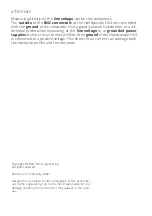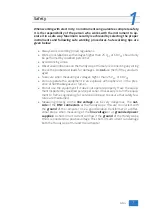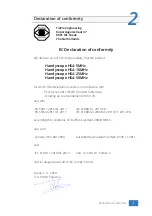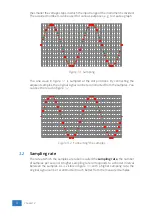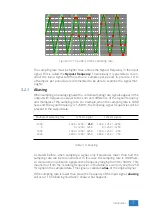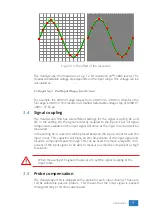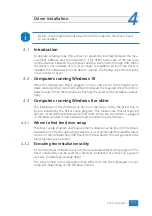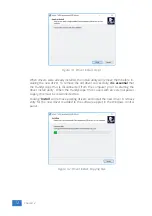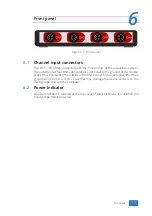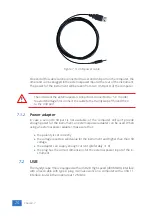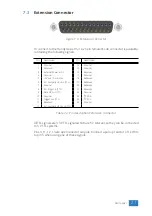
the smaller the voltage steps in which the input range of the instrument is divided.
The acquired numbers can be used for various purposes, e.g. to create a graph.
Figure 3.1: Sampling
The sine wave in figure
is sampled at the dot positions. By connecting the
adjacent samples, the original signal can be reconstructed from the samples. You
can see the result in figure
.
Figure 3.2: ”connecting” the samples
3.2
Sampling rate
The rate at which the samples are taken is called the
sampling rate
, the number
of samples per second. A higher sampling rate corresponds to a shorter interval
between the samples. As is visible in figure
, with a higher sampling rate, the
original signal can be reconstructed much better from the measured samples.
6
Chapter 3
Summary of Contents for Handyscope HS4
Page 1: ...Handyscope HS4 User manual TiePie engineering...
Page 6: ......
Page 17: ...Figure 4 3 Driver install Finished Driver installation 13...
Page 18: ...14 Chapter 4...
Page 20: ...16 Chapter 5...
Page 22: ...18 Chapter 6...
Page 26: ...22 Chapter 7...
Page 30: ...26 Chapter 8...
Page 32: ...TiePie engineering Handyscope HS4 instrument manual revision 2 27 February 2020...


